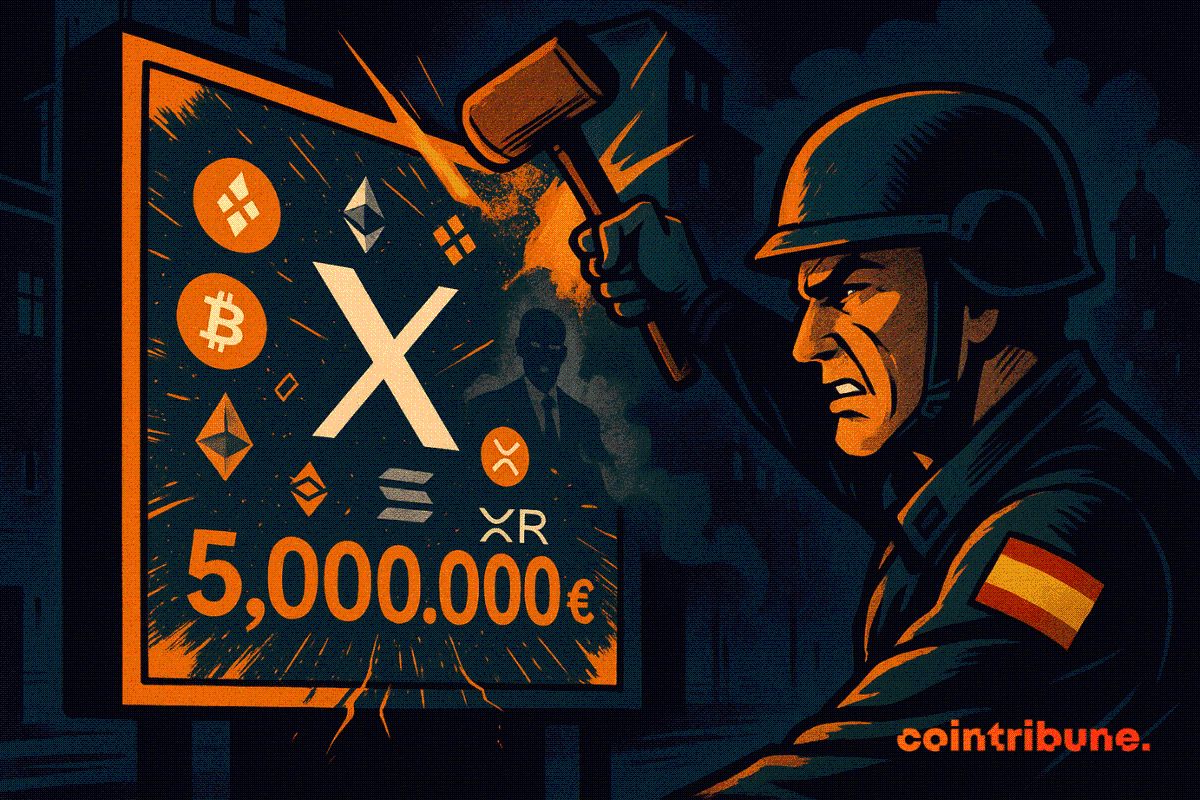Why Ethereum and ETH Treasury Firms Are Undervalued Opportunities in 2025
- Standard Chartered targets $7,500 for ETH by 2025, citing structural supply dynamics and institutional demand outpacing Bitcoin. - Institutional ETFs and treasuries absorbed 5% of ETH supply, creating deflationary pressure as corporate holdings reach 10% by 2025. - Ethereum’s 3% staking yield and DeFi utility offer a yield edge over Bitcoin, supported by regulatory clarity and network upgrades. - ETH/BTC ratio is projected to rise to 0.05 by year-end, signaling institutional preference shift and underval
In the evolving landscape of digital assets, Ethereum (ETH) has emerged as a cornerstone of institutional-grade investment. With Standard Chartered's bold $7,500 price target for 2025 and a growing consensus among analysts, the case for Ethereum is no longer speculative—it's structural. This article unpacks why ETH and its associated treasury firms represent a compelling undervaluation, driven by supply-side dynamics, institutional demand, and yield advantages that outpace Bitcoin's traditional treasury model.
Structural Supply Dynamics: A Deflationary Tailwind
Ethereum's supply constraints are accelerating. Since June 2024, institutional Digital Asset Treasury (DAT) firms and spot ETFs have absorbed nearly 5% of Ethereum's circulating supply, a pace double that of Bitcoin's treasury buying. Companies like BitMine Immersion (BMNR) and SharpLink Gaming (SBET) are treating ETH as a core reserve asset, leveraging its 3% staking yield and DeFi utility. This aggressive accumulation is not just a short-term trend—it's a structural shift. By 2025, Standard Chartered projects corporate treasuries could own up to 10% of the total ETH supply, creating a deflationary pressure that Bitcoin's fixed supply cannot replicate.
Institutional Demand: ETFs and Treasuries as Catalysts
Ethereum's institutional adoption is surging. U.S. spot ETFs have seen record inflows, with $443.9 million added on August 25 alone, nearly double Bitcoin's ETF inflows. BlackRock's ETHA and Fidelity's FETH led this charge, with ETHA alone attracting $314.9 million in new capital. This demand is not just liquidity-driven—it's strategic. Unlike Bitcoin , which offers no yield, Ethereum's staking rewards and DeFi integration make it a superior reserve asset.
Moreover, Ethereum-based treasuries are outperforming ETFs. Standard Chartered notes that ETH treasuries now trade at net asset value (NAV) multiples above 1.0, making them “very investable” compared to Bitcoin treasuries, which lack yield generation. This valuation gap is a critical edge for Ethereum in the corporate treasury space.
Yield-Driven Valuation: Ethereum's 3% Edge
The 3% staking yield on Ethereum is a game-changer. While Bitcoin treasuries like MicroStrategy's holdings sit idle, Ethereum treasuries generate income through staking and DeFi protocols. This yield advantage is compounded by Ethereum's role in the $2 trillion stablecoin ecosystem, which is expanding eightfold by 2028. The U.S. GENIUS Act's regulatory clarity for stablecoins—most of which operate on Ethereum—further cements its dominance in tokenized finance.
Why Ethereum Outperforms Bitcoin in Treasury Strategies
Bitcoin's appeal as a treasury asset is rooted in scarcity, but Ethereum's value proposition is multifaceted. It offers:
1. Yield Generation: 3% staking rewards vs. Bitcoin's 0%.
2. DeFi Utility: Access to lending, borrowing, and liquidity pools.
3. Regulatory Tailwinds: The GENIUS Act's boost to stablecoin adoption.
4. Network Upgrades: Dencun's 10x throughput increase, enabling higher-value transactions.
These factors position Ethereum as a programmable money infrastructure, not just a store of value. As Standard Chartered notes, Ethereum's ETH/BTC ratio is expected to rise from 0.039 to 0.05 by year-end, signaling a shift in institutional preference.
Buying the Dip: A Technical and Sentiment Case
Ethereum's recent pullback to $4,500 presents a strategic entry point. Technically, the asset must hold above $4,000 to maintain bullish momentum, with a break above $5,000 validating a potential bullish pennant. Market sentiment, while mixed (Fear & Greed Index at 51), shows 69% bullish sentiment, suggesting confidence in upward movement.
Conclusion: A Compelling Case for 2025
Ethereum's undervaluation is a function of its structural advantages: deflationary supply dynamics, institutional demand, and yield-driven valuation. With Standard Chartered's $7,500 price target and a roadmap of network upgrades, the case for buying the dip is robust. For investors, this is not just a bet on price—it's a bet on Ethereum's evolution as the foundational layer for digital finance.
Investment Advice: Allocate to Ethereum-based treasuries and ETFs during pullbacks above $4,000. Monitor the ETH/BTC ratio and ETF inflows for confirmation of sustained institutional demand. The next leg higher—toward $7,500 and beyond—could be the most significant in Ethereum's history.
Disclaimer: The content of this article solely reflects the author's opinion and does not represent the platform in any capacity. This article is not intended to serve as a reference for making investment decisions.
You may also like
Spain Pins X for Illegal Crypto Promotion

Crypto Market Turns Cautious as Bitcoin Slips and Fear Index Hits Extreme Lows

XRP ETF Price Crash Explained
XRP Is Not Bitcoin Or Ethereum, Says Canary CEO As XRPC ETF Launches